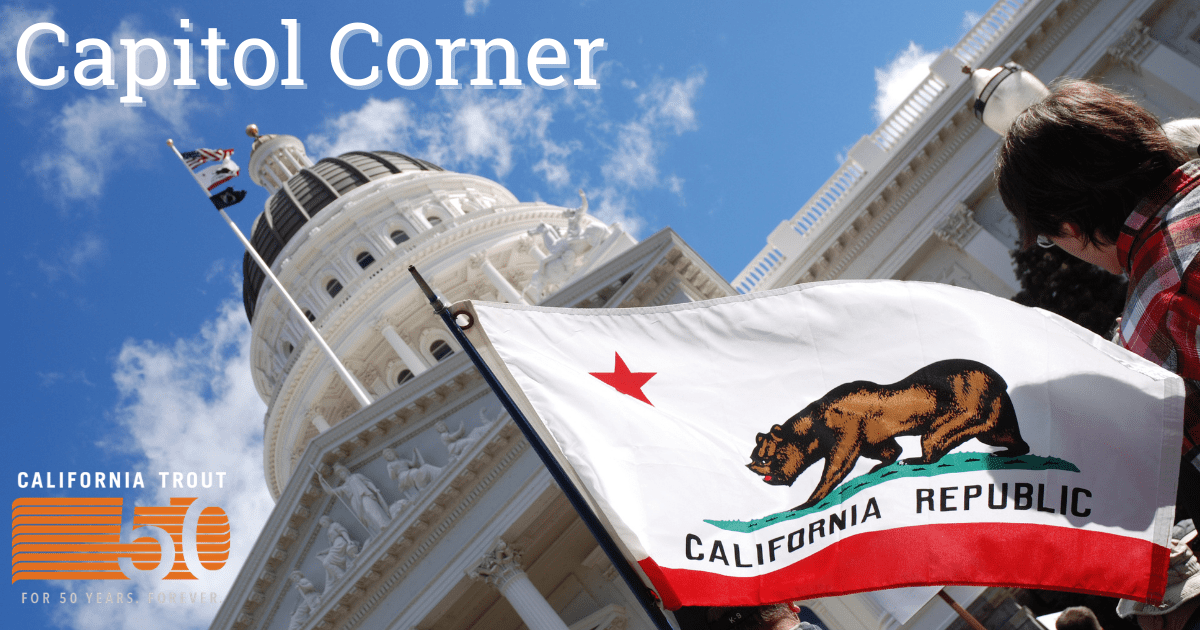Welcome to Capitol Corner, a new series dedicated to providing updates on CalTrout’s legislative and policy work. CalTrout’s policy team includes Redgie Collins (Legal and Policy Director), Analise Rivero (Policy Associate), and Kam Bezdek (Policy Intern). Between these three, they are responsible for the development and implementation of CalTrout’s natural resource and water policy agenda in the California state legislature. This includes supporting CalTrout’s organizational goals through regulatory and public funding advocacy, agency relationship building, partnership development and other policy-related objectives that add to CalTrout’s success.
 By Analise Rivero
By Analise Rivero
In October 2020, Governor Newsom issued Executive Order N-82-20, declaring it a goal of the state to protect 30 percent of our lands and oceans by 2030 (an effort also known as 30×30). After a year of listening sessions, fact finding, and public comment periods, we are expecting the California Natural Resources Agency (CNRA) to release the draft 30x30 Pathways document within the next month. This document will serve as the state’s guiding strategy on how to accomplish the 30x30 goal per the Governor’s Executive Order.
CalTrout is working hard to ensure that freshwater ecosystems are adequately included and elevated within the strategy document. With the focus on land and ocean in the 30x30 movement, it is important to ensure that freshwater ecosystems are not left behind and that they receive just as much consideration. As such, CalTrout has partnered with UC Berkeley to produce and present a white paper with freshwater-specific recommendations for the state within the 30x30 context. Over the last several months, Dr. Ted Grantham, an Assistant Cooperative Extension Specialist and Adjunct Professor in the Department of Environmental Science, Policy and Management worked with Ph.D. candidate students Lucy Andrews and Jessie Moravek to conduct a literature review and workshop before fleshing out the white paper.
With the paper complete, the CalTrout policy team has organized several meetings with the CNRA team and within the Governor’s Office to present the team’s recommendations. Once released, CalTrout and UC Berkeley will review the state’s draft 30x30 Pathways document and provide additional public comment as necessary to ensure freshwater is well represented.
The recommendations presented in the white paper are already being implemented across the state in both rural and urban areas, illustrating that freshwater ecosystem conservation is not only possible, but also delivers significant benefits to people and nature.
Check out our Executive Summary factsheet below or click here to see the full UC Berkeley x CalTrout white paper.






